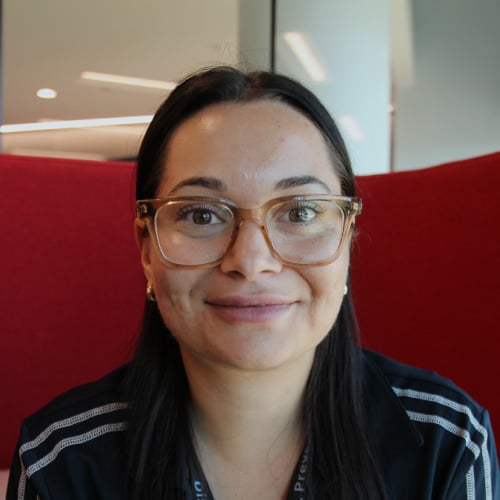
Jacinta Walton
Aboriginal Project Officer, Skin Health
jacinta.walton@thekids.org.au
Jacinta is a proud Wilman Noongar woman (Aboriginal Australian) from the South West corner of Western Australia. Jacinta is an Aboriginal Project Officer in the Healthy Skin and ARF Prevention team at The Kids Research Institute Australia where she has led community involvement on the Koolungar Moorditj Healthy Skin project, the first-ever co-designed research-service Australian study to describe skin health in urban-living Aboriginal children and young people. Under the leadership of Elder researchers, Jacinta has guideded culturally safe methods of working with the community and ensured outputs strongly reflect and align to the perspectives of Aboriginal world views.
Projects
Ngangk Ngabala Ngoonda (Sun Safety)
The ‘Ngangk Ngabala Ngoonda (Sun Safety) of Aboriginal young mob of WA’ is a community-led project that aims to identify the sun safety needs and strengthen sun safety knowledge of Aboriginal Children and Young People in Western Australia.
January 2025
Moorditj Marp (Strong Skin) Evaluation and development of culturally relevant healthy skin storybooks
Co-designed and in collaboration with community members, the impacts of this project will directly benefit families by building awareness, empowering decision-making, and improving confidence around the recognition and management of skin conditions for Aboriginal children.
Koolungar (Children) Moorditj (Strong) Healthy Skin
The Koolungar (children) Moorditj (strong) Healthy Skin project is the first ever co-designed research-service Australian study to describe skin health in urban-living Aboriginal koolungar.
Published research
Skin health of urban-living Aboriginal children attending a primary care Aboriginal Community Controlled Health Organisation clinic
Despite increasing urbanisation, little is known about skin health for urban-living Aboriginal children and young people (CYP, aged <18 years). This study aimed to investigate the primary care burden and clinical characteristics of skin conditions in this cohort.
The Koolungar Moorditj Healthy Skin Project: Elder and Community Led Resources Strengthen Aboriginal Voice for Skin Health
In partnership with local Aboriginal Community Controlled Health Organisations, the Elder-led co-designed Koolungar Moorditj Healthy Skin project is guided by principles of reciprocity, capacity building, respect, and community involvement. Through this work, the team of Elders, community members, clinicians and research staff have gained insight into the skin health needs of urban-living Aboriginal koolungar (children); and having identified a lack of targeted and culturally appropriate health literacy and health promotion resources on moorditj (strong) skin, prioritised development of community-created healthy skin resources.
Skin health of Aboriginal children living in urban communities
Skin concerns are frequent among urban-living Aboriginal children, yet specialist dermatology consultations are limited with studies highlighting the need for improved cultural security. Through newly established paediatric dermatology clinics at two urban Aboriginal Community Controlled Health Organisations (ACCHOs), we aimed to describe clinic and patient data, including disease frequencies and associations, to inform dermatology service provision and advocacy.
Describing skin health and disease in urban-living Aboriginal children: co-design, development and feasibility testing of the Koolungar Moorditj Healthy Skin pilot project
Indigenous children in colonised nations experience high rates of health disparities linked to historical trauma resulting from displacement and dispossession, as well as ongoing systemic racism. Skin infections and their complications are one such health inequity, with the highest global burden described in remote-living Australian Aboriginal and/or Torres Strait Islander (hereafter respectfully referred to as Aboriginal) children. Yet despite increasing urbanisation, little is known about the skin infection burden for urban-living Aboriginal children.
